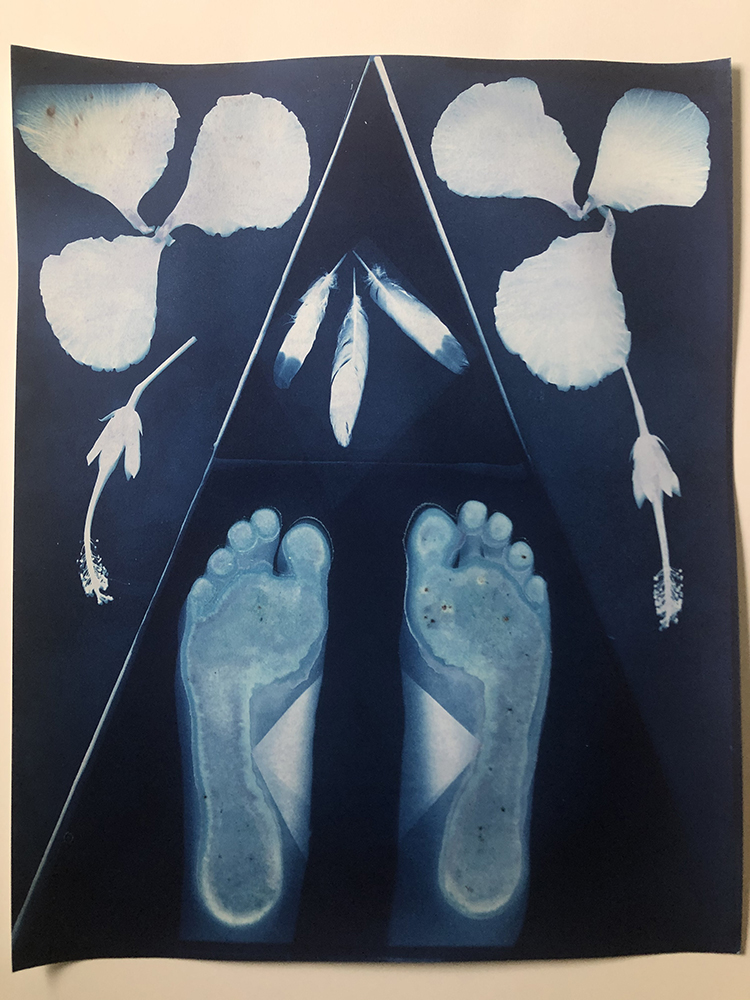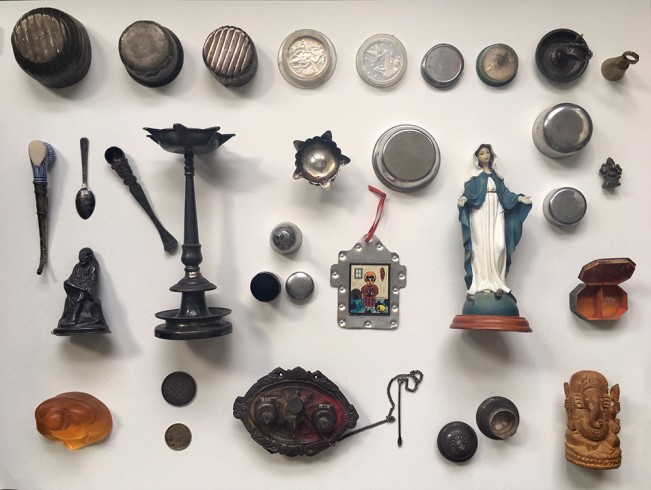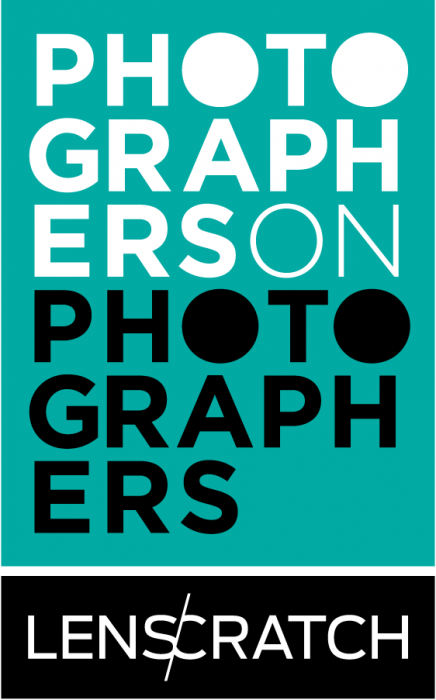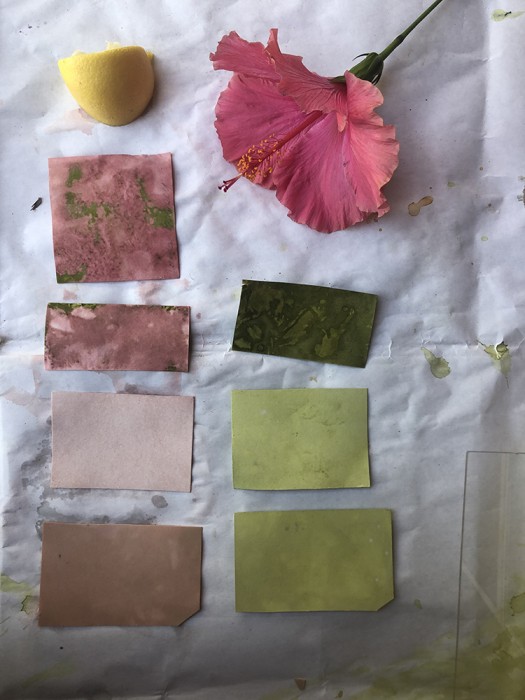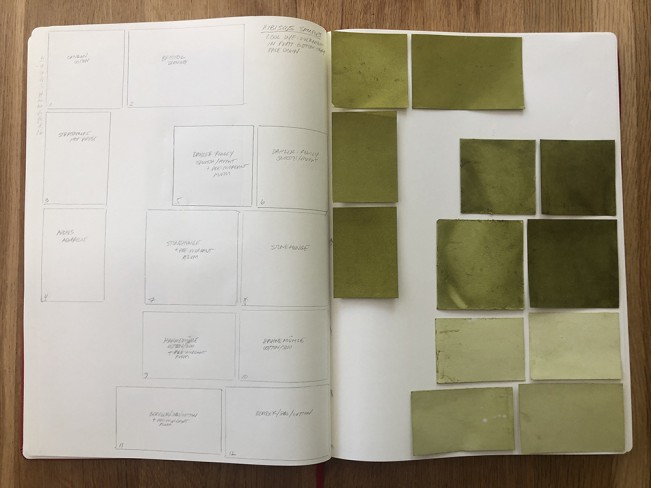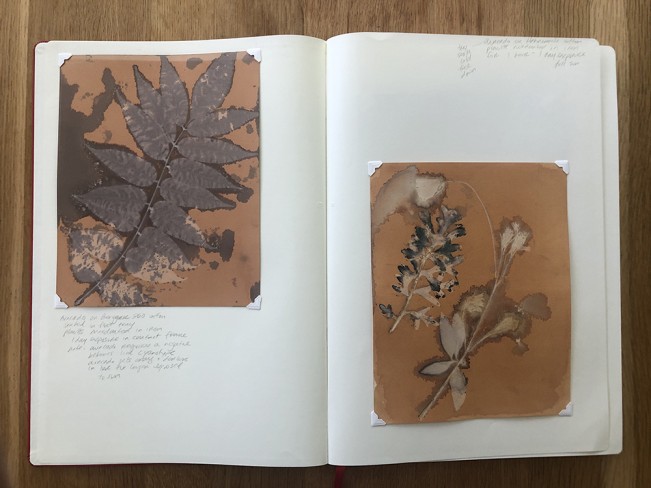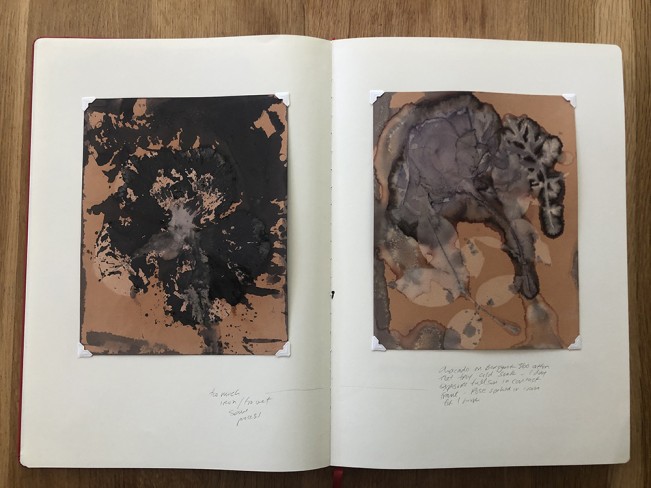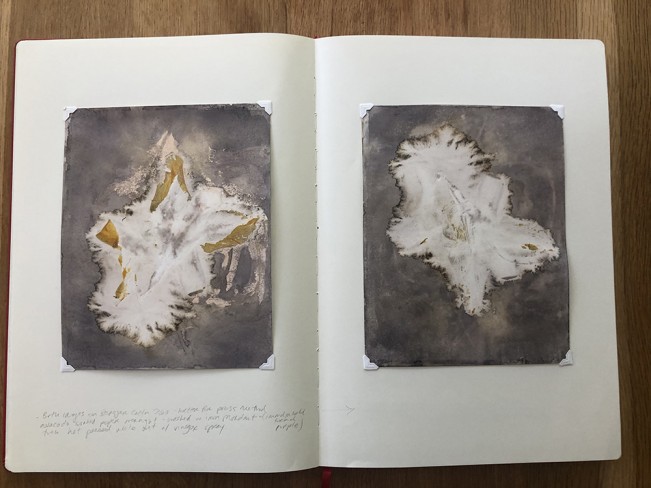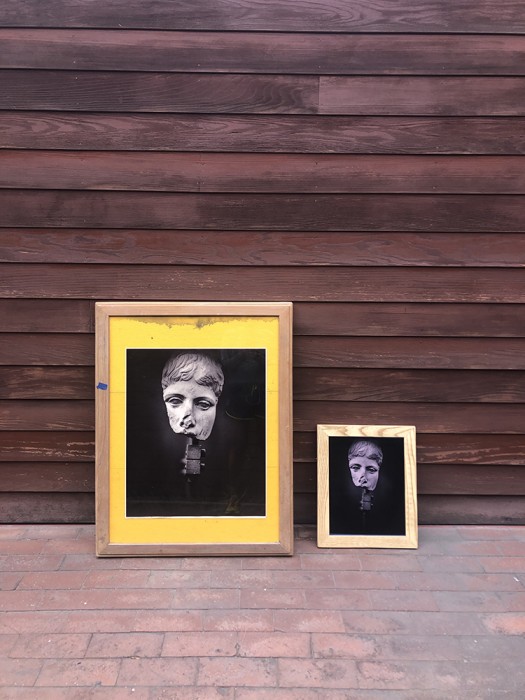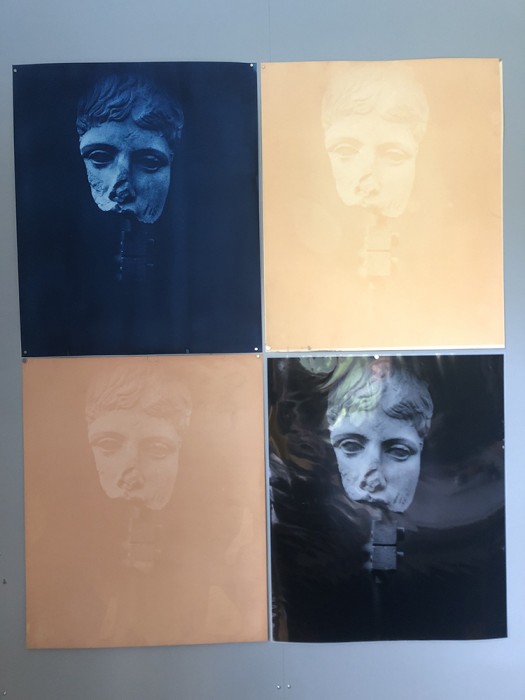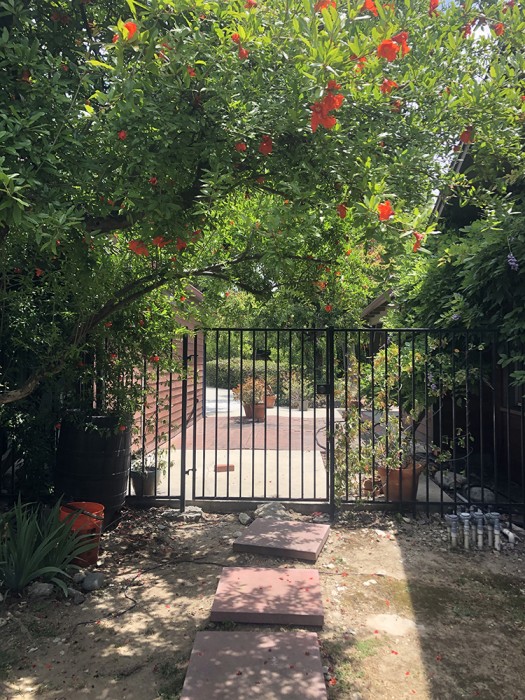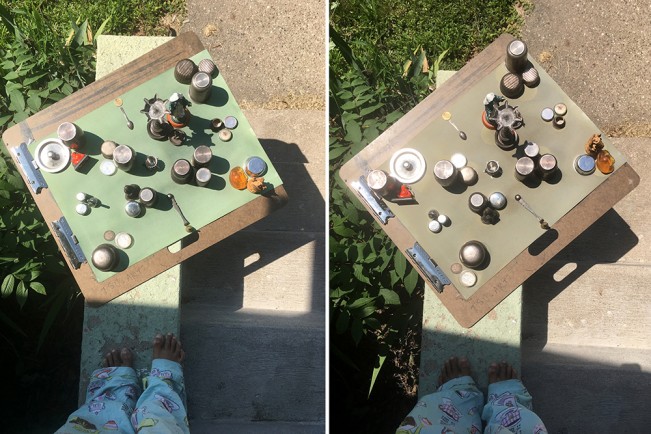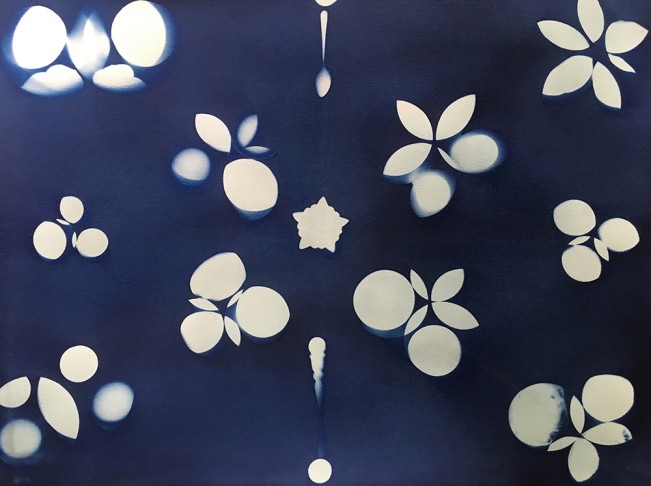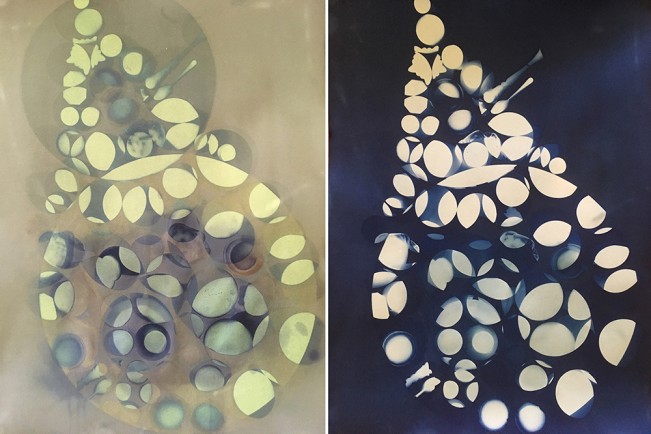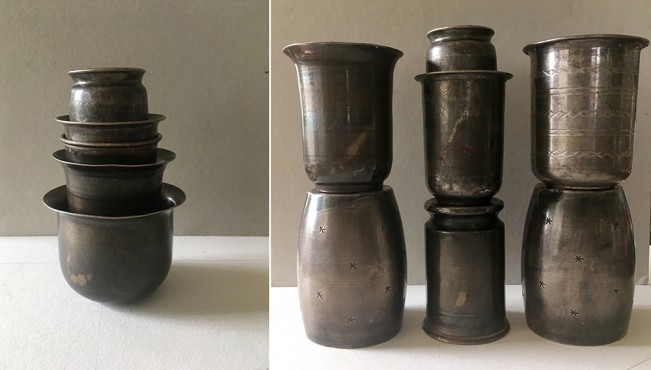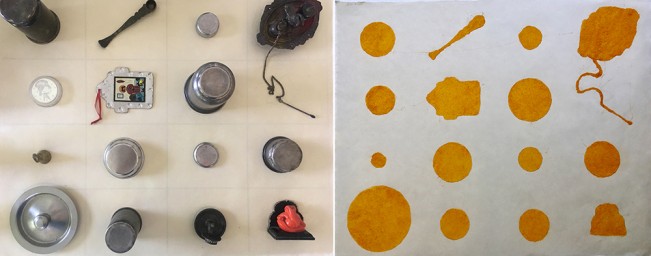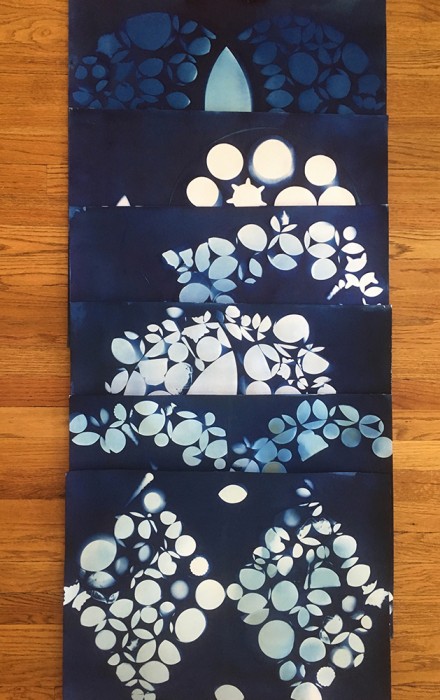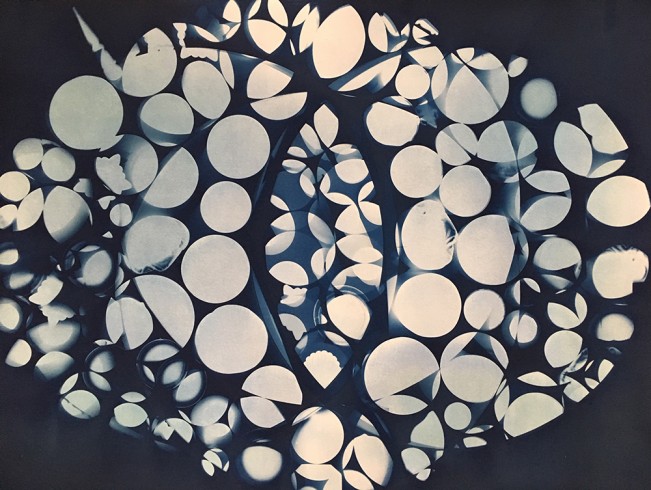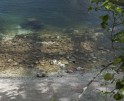Photographers on Photographers: Priya Kambli in conversation with Tarrah Krajnak
Thank you for asking me to be part of the Photographers on Photographers for Lenscratch and thank you Tarrah Krajnak for accepting my invitation and for being such a wonderful partner in this endeavor.
From our first phone conversation both Tarrah and I agreed that we wanted this project to be collaborative- where we both opened up our studios in order to share our current artmaking practice. Tarrah and I talked about how at this point in our careers we tended to only showcase work that was resolved and ready for presentation and that it would be interesting to share our work in its raw stages for a change- and wouldn’t it be lovely for both of us to see what we each were working on in our individual studios. This was also instigated by the fact that since March, starting with the lockdown, both of us had hunkered ourselves in our homes and were in full on play and experimentation mode in our respective studios- navigating lots of things: including content and how to marry those thoughts and ideas with photographic practices that were possible with the limited resources me had at home. It was interesting to see the overlaps we had in terms of the work and methodologies we both were pursuing.
What we have below is a sneak peak of a virtual studio visit- a visit that happened without either one of us stepping inside each other’s studio. And since we were both zoomed out (I am sure all the academics and other people can understand our fatigue) we conducted our conversations via phone – never actually seeing the images in person but sharing the images with each other via documents we sent each other.
Priya Kambli received her BFA at the University of Louisiana in Lafayette and an MFA from theUniversity of Houston. She is currently Professor of Art at Truman State University in Kirksville, Missouri. One of her most significant accomplishments was receiving the Book Award through PhotoLucida’s Critical Mass for her series Color Falls Down, published in 2010. This series marked her maturing as an artist and was conceived shortly after her first child, her son Kavi, was born. It inadvertently examines the question asked by Kavi at age three; did she belong to two different worlds, since she spoke two different languages? The essence of his question continues to be a driving force in her art making.
Kambli’s artwork has been well received, having been exhibited, published, collected and reviewed in the national and international photographic community. The success of Kambli’s work underlines the fact that she is engaged in an important dialogue, and reinforces her intent to make work driven by a growing awareness of the importance of many voices from diverse perspectives and the political relevance of our private struggles. Instagram: kambli.priya
Tarrah Krajnak was born in Lima, Peru in 1979. Krajnak was orphaned as an infant and adopted into a transracial family from the American coal country. This early experience of racial difference continues to drive her interest in identity, belonging, and inherited histories. Krajnak is an Associate Professor of Art at Pitzer College in Claremont, CA. She has exhibited nationally and internationally at Honor Fraser Gallery, as-is.la gallery, Houston Center for Photography, SUR Biennial Los Angeles, Silver Eye Center for Photography, Center for Photography Woodstock, SF Camerawork, Philadelphia Photographic Arts Center, The National Museum of Women in the Arts, Photo Madrid, Photo London, Belfast Photography Festival, and Unseen Amsterdam. Her work has been published in the LA Review of Books, Nueva Luz, Strange Fire Collective, and Camerawork. She received grants from the National Museum of Women in the Arts, Arizona Commission on the Arts, Texas Photographic Society, and most recently from the Harpo Foundation. Her work has been reviewed in Glasstire, Artforum, and Contemporary Review Los Angeles. Krajnak is a 2020 Lightwork AIR Recipient. She will open a solo exhibition in October 2020 at Filter Photo in Chicago, and is currently working with DAIS books on a forthcoming publication of her poems and photographs. Instagram: tarrahkrajnak_studio
Tarrah:
Context:
How do we know each other?
We were in a show together way back in 2004. Do you remember Priya? It was at the University of Oklahoma and I was part of a collaborative team at that time. Then over a decade later, I saw you wandering around in a beautiful patterned dress at the opening for the India themed Fotofest. I hadn’t seen you in years. I left SPE for a decade and then I remembered why I started up again. I needed to connect with other women and BIPOC who teach as well as work in photography. Photography discourse is really missing here in LA. There are few “photographers” really and much of what is here is based in painting and sculpture which I think is actually really good because photo discourse can be tiring and limited. However, I need to talk about photography as a medium, as a practitioner, and as an educator. I loved seeing your work at that Fotofest because I had never seen it in person, and I felt a strong connection to it at that time. I think we pose similar questions in our work. We are interested in history, and private narratives, and family, the archive, the body, portraiture, loss, migration…etc etc….
First Impressions:
Beauty
Repetition
Ritual
The Vessel/the Body
The body’s presence
The body’s absence
Representation vs abstraction
Absence as presence
negative/positive
“Work” on display…the actual work of an artist in a space in a home, amongst family,
The weather/despite or maybe because of the weather..the weather…the way we depend on it, we live by the sun,
Daily work
planning/tracing/traces/grids
Arranging objects/ history of women’s work!!!
The altar/worship/offerings
Artists I think of: many, but for some reason ruth asawa
Cultural meaning is here, but I am ignorant of most of the meaning, but I have handled these objects before because of Alex’s private altar which he keeps in our bedroom and in his office…it has similar objects that I admire and clean carefully and have photographed before. There is also what looks to be a “virgin mary”…or what I read as virgin mary.
In any case, identifying the objects in the photo and seeing them arranged is very satisfying to me and almost part of the work here.
SUN: Again, your technical notes were so surprising..the sun is so powerful here…my exposures are now 30 seconds to 1 minute to 4 minutes….i need to now work in the fog of morning to slow the exposures down….
TIME: what is time vs exposure vs waiting vs how it is revealed in the photograph…vs how long it takes to make ONE image..for both of us…time is deceptive time is moving at different speeds.
EXPOSURE/exposing
What is hidden? What is revealed?- both in terms of the actual printing process, and then in our experiment here with documenting the process…..
what is left,
what remains,
and what is fleeting,
what is moved,
What is “moving”
What are the ways abstraction was already present in your work?
I feel like I know your work pretty well, and so my first thought was that this seems like an entirely natural progression. I think one might look at your overall practice and try to make this binary between representation and abstraction, but materiality and abstraction are so present in your work. They have always been. The photography process is also made more tangible in this new work because it is literally on display.
THE BODY IS PRESENT!.
The multiple/repetition. I was looking at the new pieces (not really new, but how the individual pieces change when seen as triptych or diptych) you posted on IG today and they are starting to feel very much like this one long continuous helix. I know people will make connections to science and maybe DNA because the unfolding starts to mimic shapes found in nature, under the microscope, etc etc. This does connect with the early history of photography as well, but again, I’m so sick of that conversation. Is there another way to maybe think of this unfolding? I thought maybe of women’s clothing, lace, patterning in the domestic sphere and I quite like that. I think of my students’ reaction to abstract work and their resistance to it….the kind of resistance to abstraction because it IS photography and the inability to sit with the abstract….to let it be “marks” or “shapes” rather than representation, even though these are in fact BOTH…like language…they always want to “interpret” the abstract into something representational…like a child looking at clouds in the sky and finding a face or something. I hate this. I mean, I hate that I do this as well, that it seems we can’t help it in some way. Getting back to language, many of the artists I love work in performance or sculpture or they are painters who have all formed thier own private language to some degree like agnes martin, georgia okeefe, etel adnan, ruth asawa, ana mendieta,
Language..something about forming your own language here Priya. As if you are making marks that convey meaning like letters and words. I notice that these artists who work in the abstract start to create their own symbols and their own marks represent their own language and I think that is what is going on in our work. It is like the beginning of learning a new language. I love this.
Priya:
How do we know each other?
Tarrah, I didn’t remember our show together, which is so strange for me. However, I remember seeing Wilka and your collaborative work for the first time in either EnFoco’s or at CPW’s publication and feeling a twang in my heart- the work was amazing and I remember being in awe of it and also jealous – the work was, powerful, smart and innovative and I wasn’t sure if my own work would ever be that potent. I followed you guys as much as it was possible in the days of no social media- and after a while you guys just disappeared/vanished. I remember meeting Wilka at one of the FotoFest 2010 maybe- she was sitting just spaced out in a corner- her face a turmoil of emotions- I approached her and we talked – I doubt she remembers me – but I remember her. So glad we met in person at Houston, I remember having so many emotions on seeing you, so excited to see you and yet nervous and oddly shy (which I am not) at the same time. I am still in awe with your work and the visual power it exudes.
Yes, I too need to have women of colour, especially artists and academics in my life- being in the rural Midwest means my world is predominantly white and the conversations we have had of being an artist of colour in academia is a balm I needed.
Virtual studio visit:
It’s interesting to see all the overlaps in our work- the need to address identity, the question of belonging, family, the physicality and tactility of both our work, and the need to constantly push ourselves and the work in a direction that is constantly in flux and challenging.
Images you sent:
You standing on the cyanotypes/ your meditations: this blew me out of the water- I think I laughed out loud when I saw it – it startled me with its beauty and intent.
I thought how grounded this work was- not just in terms of the material used but also in terms of the act of standing barefoot on the cyanotype. It made me think about:
• The first physical impression of a child- their footprints made in the hospital – official imprints.
• The first act of freedom as a child, learning to walk on your own two feet – independence
• The act of defiance – to stand your ground – claiming of space
• The quiet act, so introspective this connection of the body, the mind and the paper
• The cyanotype as a prayer mat
• The body as a sundial- marking the progression of the sun and time
• The marking and making of a sacred and sanctioned space
• The auspicious act/invitation
• The weight of the body- pressing down
• The footprints- impressions of a goddess – to worship – the divine – buddha’s footsteps
The flowers and patterns they create around you seem very eastern to me. They make me think of puja’s and the offering made to gods – the decoration, the ornamentation, the offerings. Their separation from the feet/body – the separation as a threshold – significant as a making of the internal and external – body and nature – intimate and public.
The variations of these meditation –
• Visual acts in which tradition and change exist simultaneously
• The process involves concentration and memory
• Renewal visual performance
• Symmetry, repetition and rhythm – infinite variables
• Acts of welcome, to express gratitude, ask for forgiveness, to remember
• Harnessing the potential of pattern so that it manifest in myriad visual outcome
The Anthotypes, which pierced me. I love the idea of brewing up color, bringing/conjuring it to life in liquid form to apply it on a flat surface to stagnate them, but also to hold it still to make it observe. Thoughts about them:
• Momento mori
• A portrait of a flower/ leaf
• An act of creation and dying – the yin and yang – from earth to earth- the cycle of nature
• Notion of impermanence and presence – the colours conjured and applied so that they record images transforming themselves in the meanwhile – but that each of these colours in some way holds on to its own intention and destiny and that they will fade.
• Incomplete memories
Exposures- I love the way you are creating masks for each cyanotype and how they delineate space- I am masking the cyanotype too in my work but the lines are more to cover up – unlike yours where they break up, divide and sequester and corale space.
I am amazed how quick your exposures are- how can light be so different in its intensity? Light being recorded on the cyanotypes – in terms of shadow are my favorite part of the cyanotypes
It was so funny when you wrote, “I can’t believe two flowers moved” – I had the same reaction when the wind blew multiple of my pieces- but then I was amazed by how that cyanotype looked. It is funny that I want the weather to completely collaborate with me, to do my bidding and yet surprise me once in a while.
Body:
I am amazed to see you standing on the cyanotypes- performing on in – the weight of your body pressed into the cyanotype, an actual imprint of you. The use of your own body in your work is fascinating to me- as I am always trying to figure out how to in some ways remove my body from my work and yet have its presence be there and felt.
Language- How do we tell a story/ narration via photography – especially if the images are abstract and the notion of photography as a singular/ one-of -a-kind image rather than multiple is in play. For me (us) the language of photography is the chosen one- you mentioned you think like a photographer- no matter what the materials are presented to you. For me this language of communication is also my emigrant mother tongue. “ what if the familiar is foreign and the foreign familiar” – from a poem by Ifrah Mahamud Magan. The necessity of drawing upon the personal as political – not as a visual strategy but as a way of living , creating, existing.
Reflection/Ending _ Tarrah
We had this really intense two weeks of being connected and sharing brand new work in progress, and in our last conversation I said I felt so much anxiety about sharing things that are too new, not ready, still being invented, and/or discovered. This has to do with the idea of giving too much of myself away. Sometimes I feel like I relate to those early ideas around photography and the soul or like Balzac my skin feels like it falls off in thin layers whenever I post my work to this platform that takes so much of our lives and turns it into data. I have a lot of anxiety around the tension of the public vs private and the nature of social media. I know that I have an enormous need and desire for quiet and privacy in my life and studio work– to be able to concentrate, to live in the moment, to write and read every day as part of my practice is very difficult when I am “too connected” to social media. I learned from you though that it can also be a way of building community in these times of isolation so I try. I try. I have been sharing more and more and then pulling back like waves. The next wave will now be to edit poems and photos for my forthcoming book El Jardin De Senderos Que Se Bifurcan. I am working on this book with DAIS– they recently worked with Zora J Murff. Zora recommended this publisher, and I really trust other artists of color when it comes to finding the right publisher. I think it is a really good fit for this project. We are working collaboratively and planning a small handmade low edition number book that will also have a low price point. The book examines my relationship to the painful political histories of Lima, Peru circa 1979. It took me 7 years in the making– to be able to process the difficult content, and then to write the poems as well as make the photographs. When you work on a book this long your own relationship to it changes and I think of it now as a very quiet meditation– more about the nature of historical trauma and orphanhood than my own personal narrative. So the book is currently on the horizon as well as my solo exhibition at Filter Photo in Chicago in October. I am re-imagining the book as a series of smaller cyanotypes for the exhibition because I have no access to my darkroom, but also because the cyanotype feels like the perfect medium right now.
Reflection/Ending _Priya
Our conversations were a saving grace for me. Having been isolated in an already isolated rural community, I wanted to talk about what I was doing and was simultaneously very curious about what others were doing in their studios. Our conversations sated me, energized me, made me competitive (Tarrah was making amazing work and I wanted to keep up), and pushed me to keep challenging myself in the studio. It was what I desperately needed and the ease of our conversation made it so that they were a balm to my anxious soul.
Posts on Lenscratch may not be reproduced without the permission of the Lenscratch staff and the photographer.
Recommended
-
Earth Month Photographers on Photographers: Josh Hobson in Conversation with Kes EfstathiouApril 19th, 2024
-
Earth Month Photographers on Photographers: Leonor Jurado in Conversation with Jessica HaysApril 18th, 2024
-
Earth Month Photographers on Photographers: Sarah Knobel in Conversation with Jamie HouseApril 17th, 2024
-
Earth Month: Photographers on Photographers, Dennis DeHart in conversation with Laura PlagemanApril 16th, 2024
-
Photographers on Photographers: Jessica Hays in Conversation with Dana FritzSeptember 2nd, 2023

